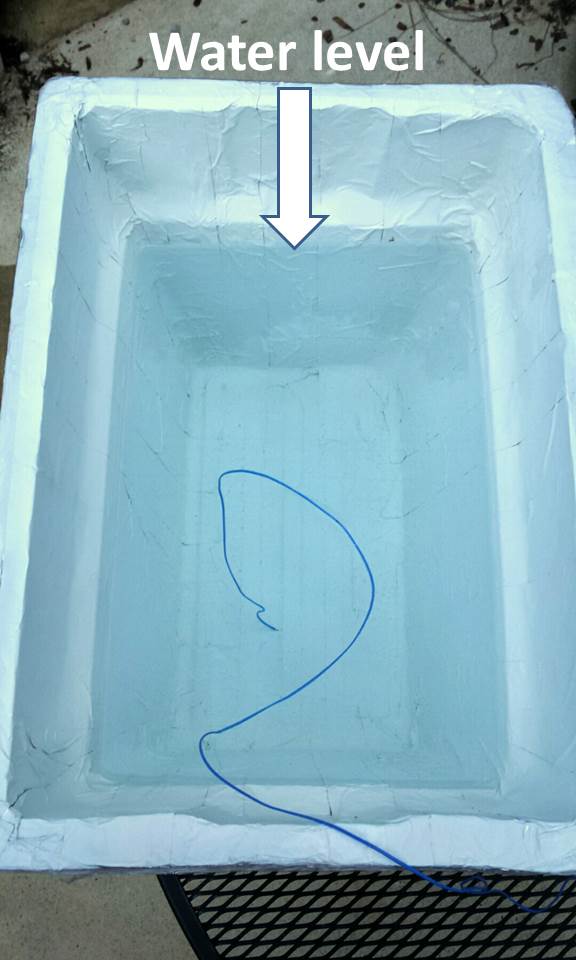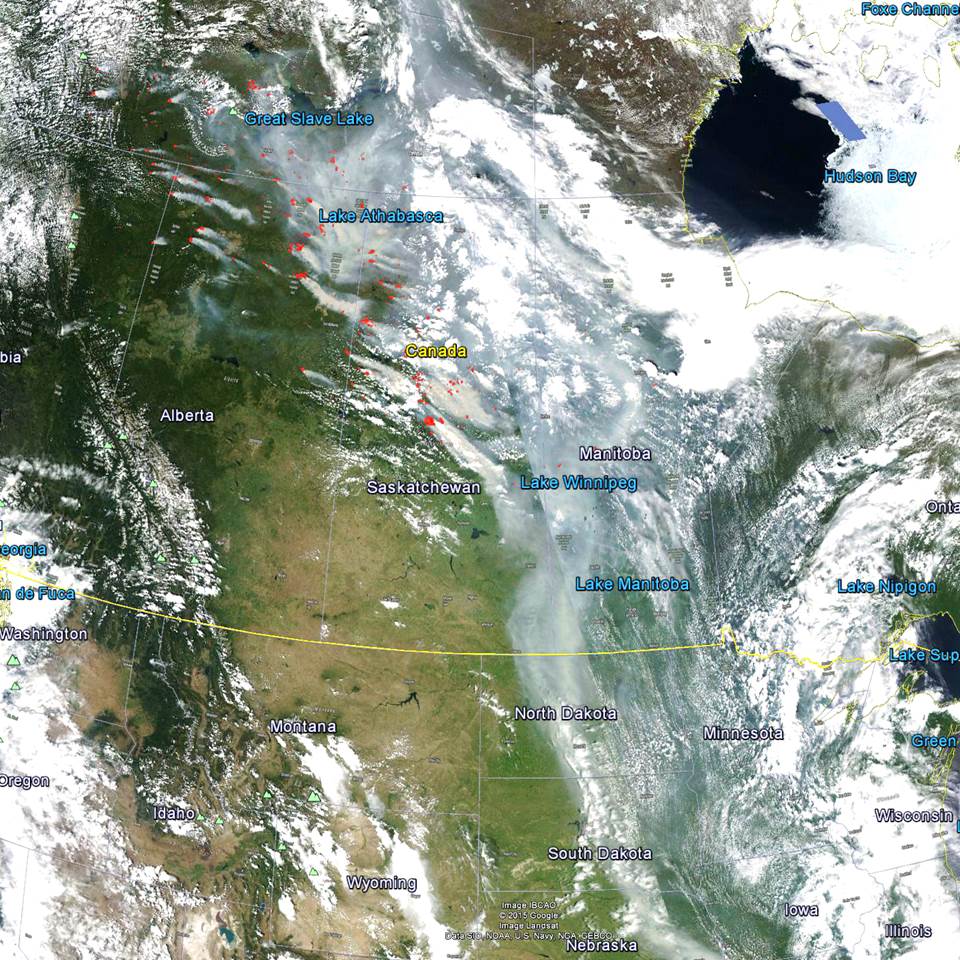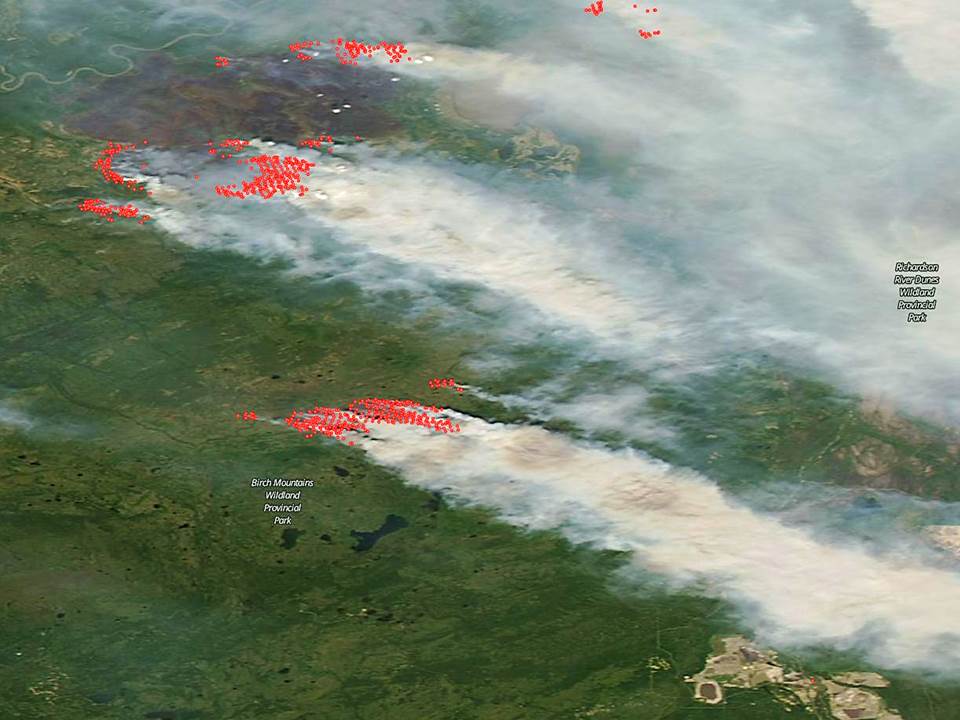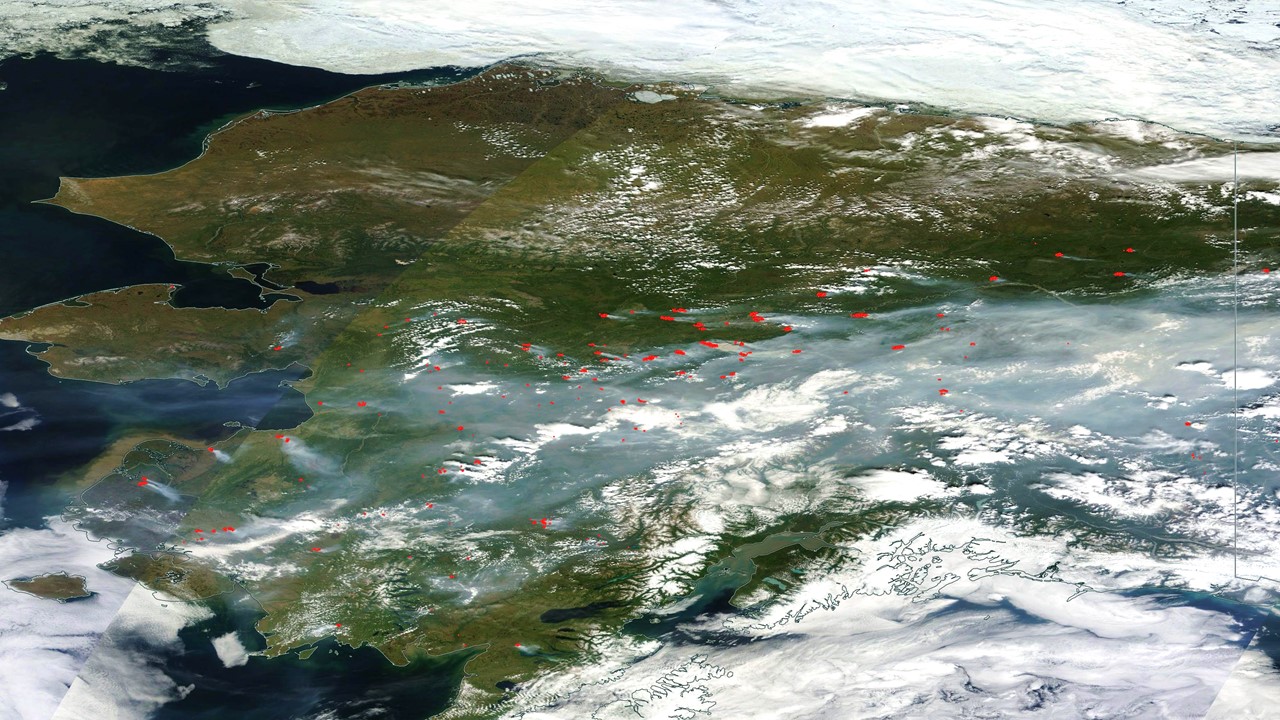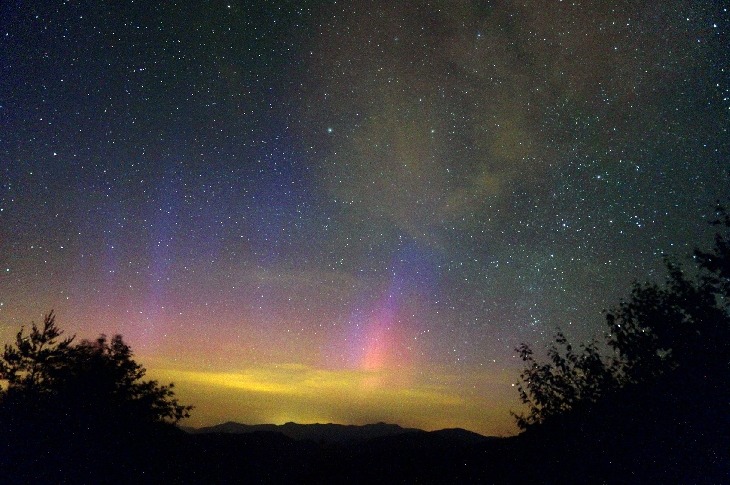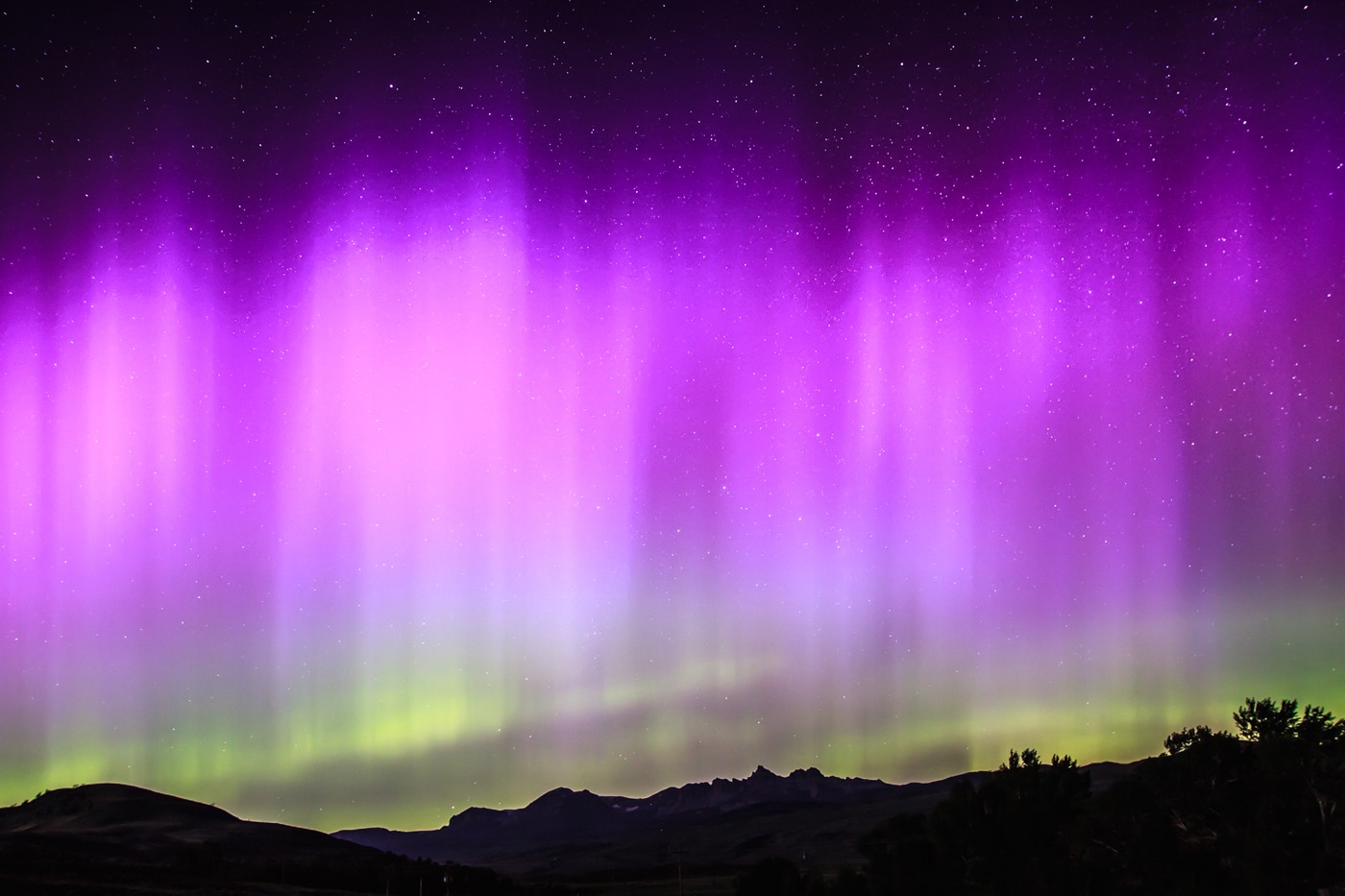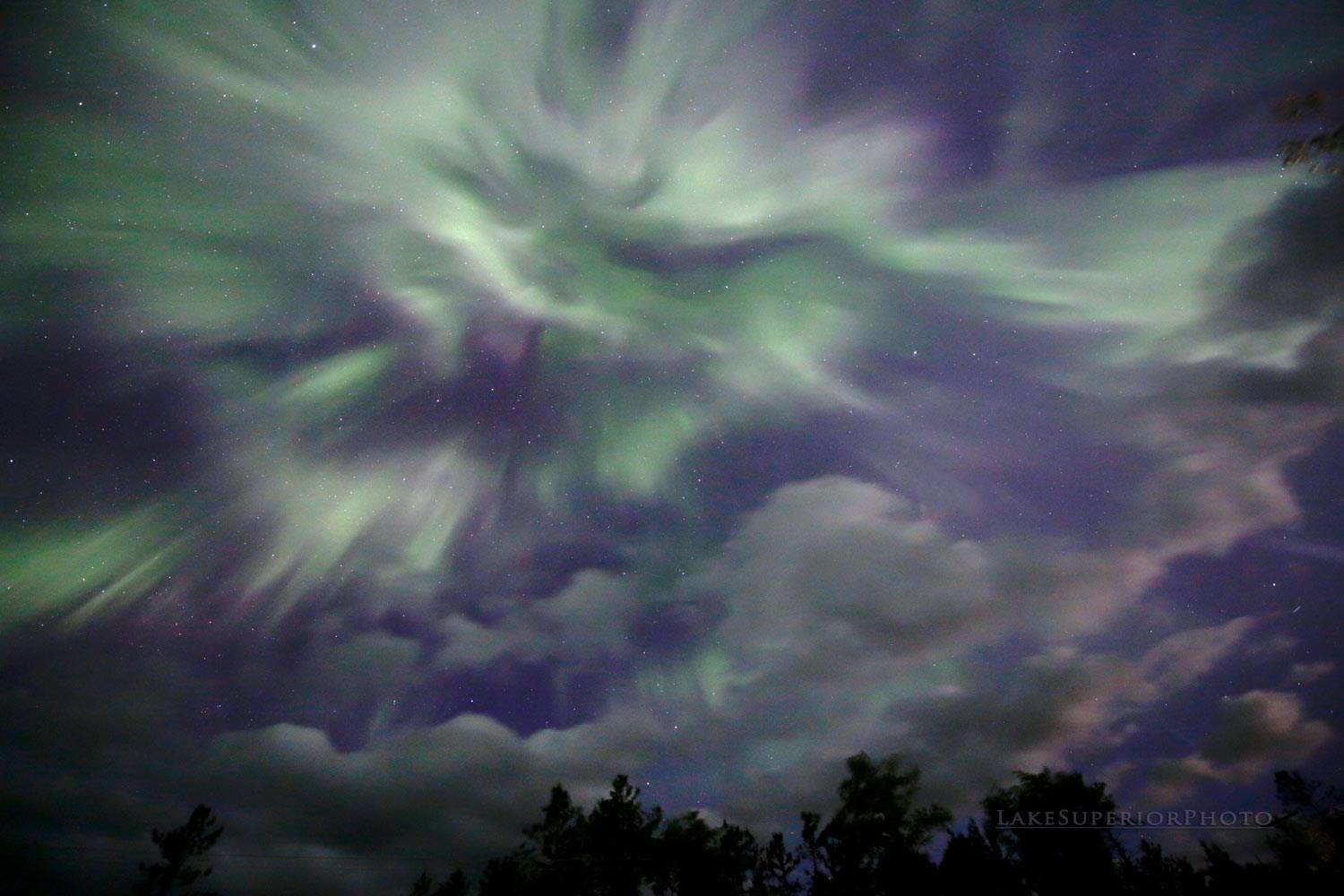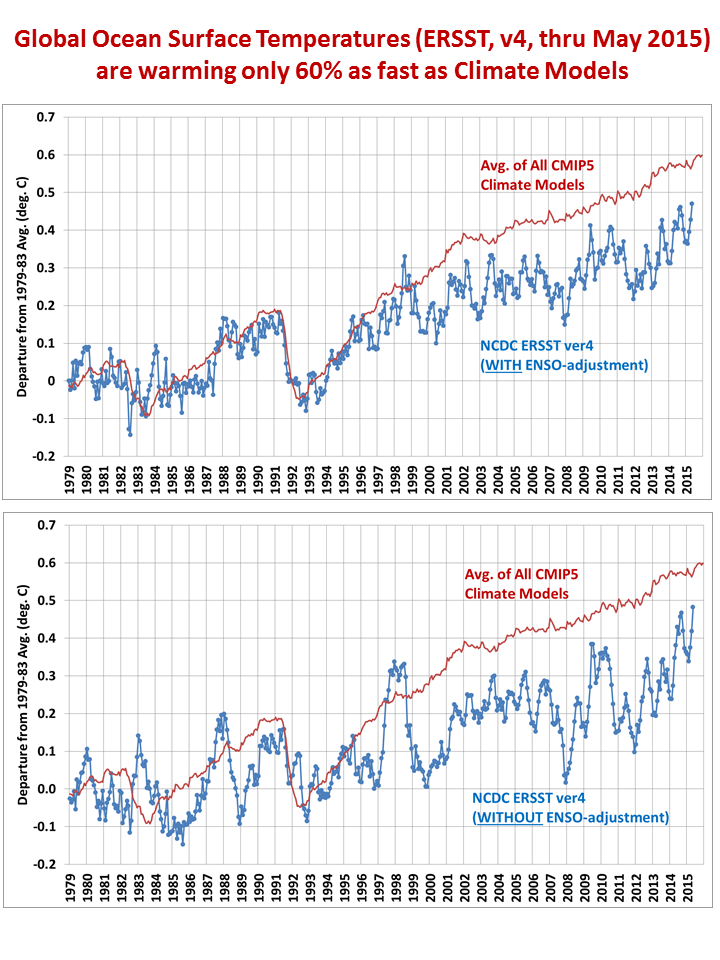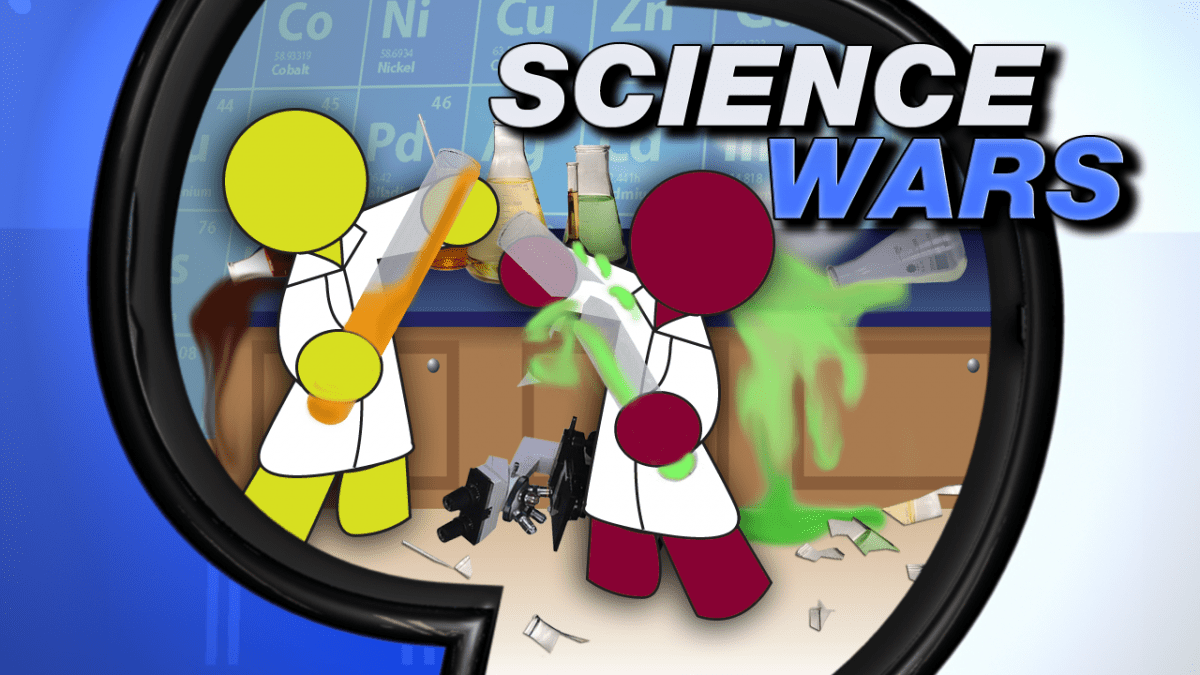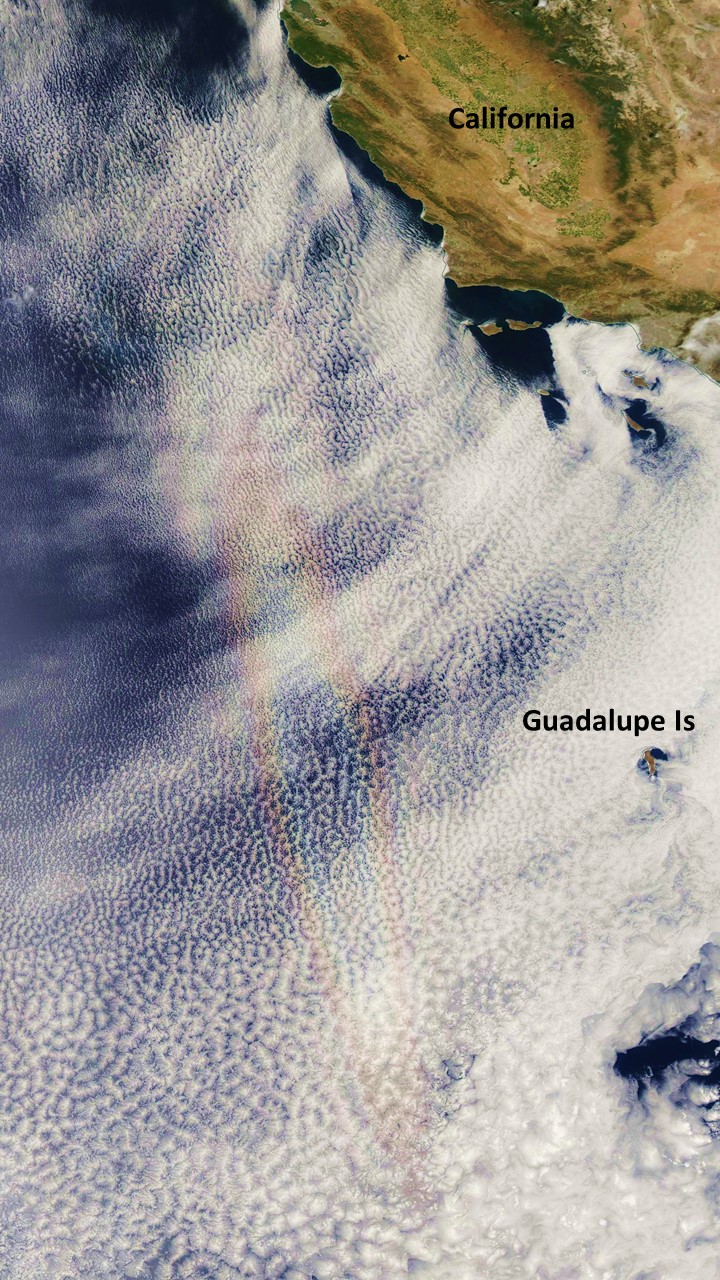I’ve had a request to (once again) go through an explanation of the (poorly-named) Greenhouse Effect (GHE). Hopefully there is something which follows that will help you understand this complex subject.
The greenhouse effect usually refers to a net increase in the Earth’s surface temperature due to the fact that the atmosphere both absorbs and emits infrared radiation. (Our miniscule enhancement of the natural greenhouse effect with carbon dioxide emissions, and its possible role in global warming, is a separate issue).
This GHE temperature increase is frequently quoted as being around 60 deg. F, thus keeping the Earth from being an ice planet, since its average surface temperature is somewhere around 59 or 60 deg. F.
This 60 deg. F warming attributable to the GHE is actually incorrect; the greenhouse effect on surface temperature, if left to its own devices, would actually be at least twice that strong…more like 140 deg F average surface temperature…but most of that theoretical surface temperature rise is short-circuited by convective heat loss from the surface caused by convective air currents, in turn caused by the greenhouse effect, which also largely creates the weather we experience.
That’s right – without the greenhouse effect, we would not have weather as we know it. The greenhouse effect, energized by solar heating, creates weather.
The GHE is somewhat controversial among some skeptics, probably because we can’t “see it” the way we can see visible sunlight and the resulting heating of surfaces sunlight falls upon – a rather non-controversial cause-and-effect process. It instead involves infrared (IR) light, which we cannot see, but which is an essential part of the energy flows in our climate system…and in most other systems that generate heat. You can actually feel if it is sufficiently strong (e.g. radiant heat from a stove or fire).
I must preface the following discussion with this: The temperature of any object represents a balance between energy gained and energy lost by that object. Temperature is an energy balance issue. Unless phase changes are involved (e.g. melting ice), if more energy is gained than lost, temperature goes up. If more energy is lost than gained, temperature goes down. Understanding this is fundamental to understanding weather and climate, as well as the following discussion.
The atmosphere contains “greenhouse gases” (GHGs), which means gases which are particularly strong absorbers and emitters of IR radiation. In the Earth’s atmosphere, the main GHGs are water vapor and carbon dioxide. Absorption and emission of IR go together because anything that is a good absorber of IR is also a good emitter, although in general the rates of absorption and emission are not the same since absorption is mostly temperature-independent but emission is very temperature-dependent.
In the classical Kiehl-Trenberth global energy budget diagram, the energy flows I have marked with an “X” would not exist without GHGs:
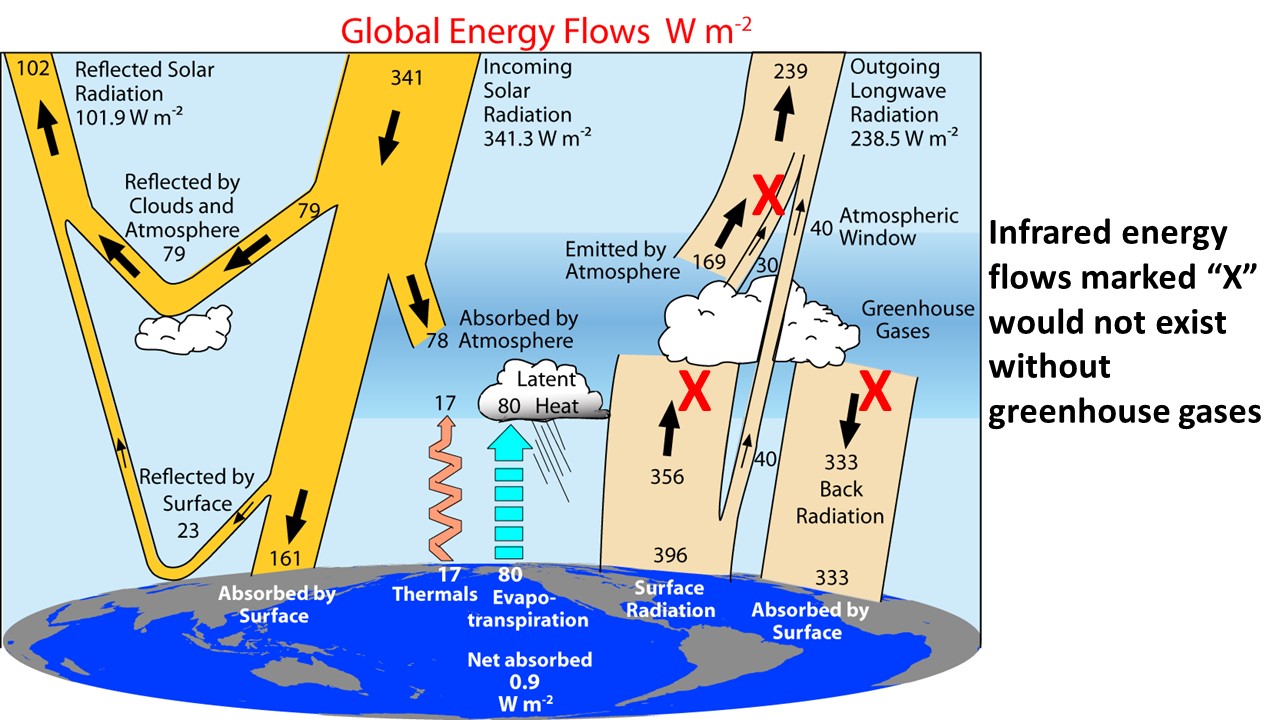
Now, recall I said that temperature is a function of rates of energy gain and energy loss. Thus, those energy flow arrows marked with an “X” in the above diagram represent huge flows of energy which can affect temperature, if they really exist.
So, let’s now think through what happens as sunlight enters the climate system. As the Earth’s surface absorbs sunlight it warms up. As it warms up, it emits more and more IR energy, limiting its temperature rise (remember “energy balance”?).
If the atmosphere could not intercept (absorb) any of that surface-emitted IR energy, the energy would readily escape to outer space and as a result it has been estimated that the Earth’s average surface temperature would be only about 0 deg. F. But we really don’t know exactly because there would be a lot more ice, which would reflect more sunlight, which would make temperatures even colder. Also, we have no idea why kinds of clouds would exist under those conditions. Suffice it to say the Earth would probably be too cold for most life as we know it to survive.
But the atmosphere DOES absorb IR energy. The IR absorption coefficients at various wavelengths, temperature, and pressures have been measured for water vapor, CO2, etc., in laboratories and published for decades.
This absorption means the atmosphere also EMITS IR energy, both upward and downward. And it is that DOWNWARD flow of IR energy (sometimes called “back radiation”) which is necessary for net warming of the surface from the greenhouse effect.
(Technical diversion: This is where the Sky Dragon Slayers get tripped up. They claim the colder atmosphere cannot emit IR downward toward a warmer surface below, when in fact all the 2nd Law of Thermodynamics would require is that the NET flow of energy in all forms be from higher temperature to lower temperature. This is still true in my discussion.)
Now, some will claim the atmosphere’s decreasing temperature with height is also necessary for the greenhouse effect to occur. While this is true, the decrease in temperature with height in the troposphere is ultimately caused by the greenhouse effect itself.
You see, as long as an atmosphere (it doesn’t matter from which planet) has greenhouse gases, the temperature will decrease with height. Without convection, the temperature would decrease drastically with height…the so called “pure radiative equilibrium” case, first demonstrated by Manabe and Strickler (1964). The net effect of GHGs is to strongly warm the surface lower atmosphere temperature, and strongly cool the upper atmosphere temperature, compared to if those gases did not exist. The GHE makes the atmosphere so unstable that convection – weather – results, which restores the atmospheric temperature lapse rate to somewhere between dry adiabatic and moist adiabatic.
Remember, without greenhouse gases, the upper atmosphere could not lose the energy it accumulates from all sources, and would stay warm, and the atmosphere would not destabilize and cause convective overturning (weather).
This net result is not intuitively obvious. I sometimes use the (admittedly imperfect) analogy of insulation in a house in winter (even though heat conduction is a different physical process from radiation). Given the same rate of energy input into the home by its heating system, addition of insulation slows the net rate of heat flow from the warmer interior to the cold exterior, causing higher temperatures inside and lower temperatures outside, compared to if the insulation did not exist.
Again, temperature is the result of energy gain AND energy loss. If you reduce the rate of energy loss, temperature will rise…even if the energy input is the same. Extremely high temperatures can even be created with very little energy input…even from a tiny battery…if you can reduce the rate of energy loss to near zero. You cannot say anything about temperature based upon the rate of energy input alone, any more than you can say what the average level of a lake will be based upon the rate of water input alone. It just ain’t physically possible.
Analogous to insulation in a heated home, greenhouse gases reduce the net rate of infrared energy transfer from the surface and lower atmosphere to outer space, causing the surface and lower atmosphere to be warmer, and the upper atmosphere to be colder, than if greenhouse gases did not exist.
Since the effect is not entirely intuitive, years ago we programmed up the equations ourselves in a 1-D radiative-convective model for me to be convinced this is what actually happens. When the model is initialized with global average sunlight and atmospheric greenhouse gas concentrations, from any initial temperature profile you want (even absolute zero), it eventually equilibrates to the observed average vertical temperature structure of the atmosphere.
And I suppose it is the non-intuitive nature of the process (I required a model demonstration to finally believe it) that breeds so much controversy and alternative ideas. I get that.
Now, I know that this post will cause a few people (you know who you are) to object with hand-waving arguments involving technical jargon that what really happens is something different. But until they put their ideas in the form of physical equations based upon known (and laboratory-measured) processes, which conserve energy, in a time-dependent model that also produces the observed average temperature profile of the atmosphere, I will not believe them.
What those people need to do is go read a book on atmospheric radiation, say Grant Petty’s A First Course In Atmospheric Radiation. I know Grant, and he is a brilliant and careful scientist. If you disagree with him (and the many other experts who agree with him), you’d better have some pretty good evidence to back your case up.
The bottom line, then, is the Greenhouse Effect, due mostly to greenhouse gases, is largely caused by the fact that the atmosphere emits IR energy downward, the so-called “back radiation”. This single component of the whole GHE process basically then determines all of the other features of the greenhouse effect and leads to net GHE warming of the Earth’s surface.
You can measure the greenhouse effect yourself with a handheld IR thermometer pointed at the sky, which measures the temperature change caused by a change in downwelling IR radiation. In a clear sky, the indicated temperature pointing straight up (“seeing” higher altitudes) will be colder than if pointed at an angle (measuring lower altitudes). This is direct evidence of the greenhouse effect…changes in downwelling IR change the temperature of a surface (the microbolometer in the handheld IR thermometer). That is the greenhouse effect.
If I’ve make a mistake in the above, I’ll fix it. I realize some might not like the way I’ve phrased certain things. But I’ve been working in this field over 20 years, and the above is the best I can do in 1-2 hours time. From some of the objections you will see in the comments, you will find it is a complex subject, indeed.
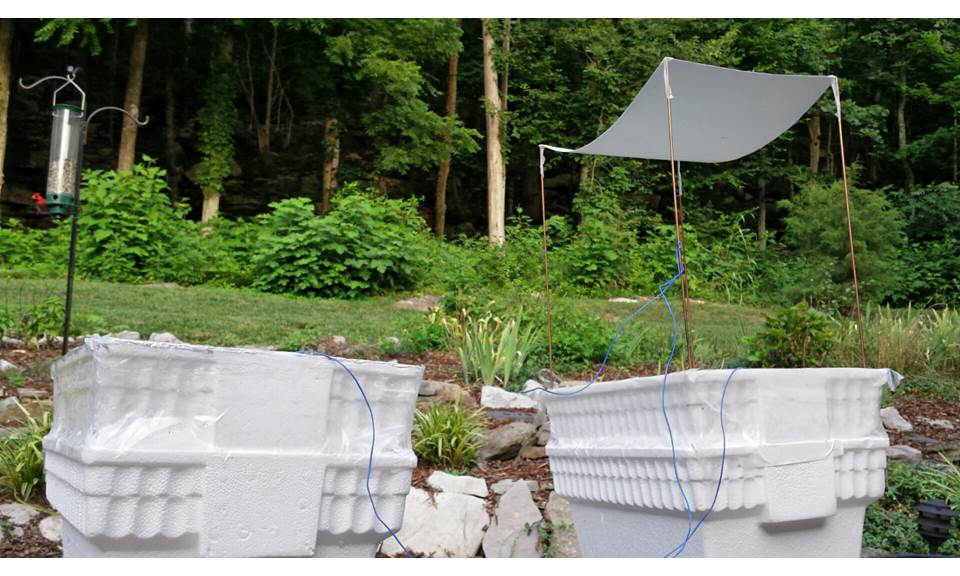
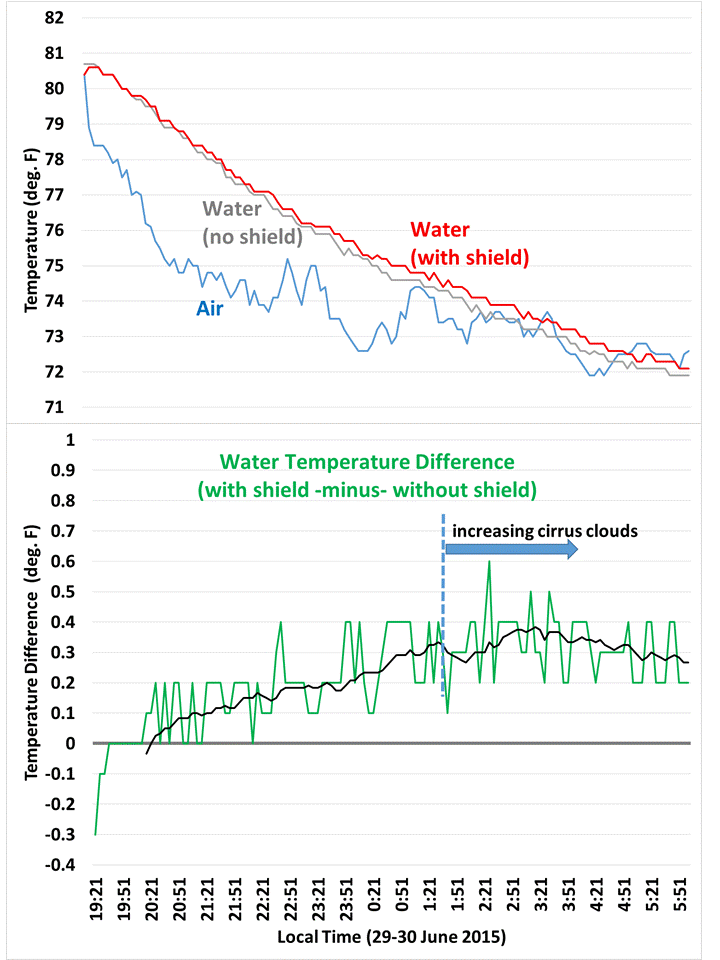

 Home/Blog
Home/Blog